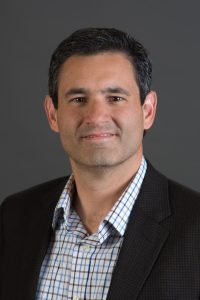Obesity and Fatty Liver Disease: The Link Between Metabolic Disorders and NASH
For decades, the general public has been aware of the many health risks of being obese, including diabetes, heart disease and certain cancers. However, many are not be aware that obesity is also linked to liver disease: specifically Non-Alcoholic Fatty Liver Disease (NAFLD), which in its most severe form, becomes Non-Alcoholic Steatohepatitis (NASH).
NAFLD/NASH Defined
According to the American Liver Foundation, it is normal for the liver to contain some fat. However, if more than five to ten percent of the liver’s weight is fat, then it is considered to be a fatty liver (steatosis).
NAFLD is the build up of extra fat in liver cells that is not caused by alcohol. It is the most common form of liver disease in children and has more than doubled in the past 20 years, a statistic that’s important to remember during September’s National Childhood Obesity Awareness Month.
The more severe form of NAFLD is NASH, which causes the liver to swell and become damaged. NASH tends to develop in people who are overweight or obese, or have diabetes, high cholesterol or high triglycerides. However, some people have NASH even if they do not have any risk factors.
Difficulties Diagnosing NASH
NASH often has no symptoms and people can have the disease for years before symptoms occur, making the disease difficult to diagnose.

Dr. Sammy Saab, David Geffen School of Medicine, UCLA
“Fatty liver is quite common in the United States,” said Sammy Saab, MD, MPH, AGAF, professor, Medicine and Surgery, Head, Outcomes Research in Hepatology, David Geffen School of Medicine, UCLA and co-chair of the National Medical Advisory Committee for the American Liver Foundation. “The hard part is identifying who has simple fat that doesn’t cause serious liver problems and who has the more serious NASH.”
Dr. Saab went on to note that the vast number of people with fatty liver makes it impractical to diagnose NASH using biopsy, an invasive technique with risks including pain, bleeding and sampling errors. Instead, he said that imaging and blood tests are the best and most non-invasive methods for detecting NASH.
He pointed to emerging imaging modalities such as ultrasound or magnetic resonance elastography, which can identify scar tissue and fibrosis, important predictors of outcomes in fatty liver. He also noted that blood tests, including AST-to-Platelet Ratio Index (APRI) and Fibrosis-4 (Fib4), can be used to easily estimate the chances of a patient having advanced fibrosis.
Treating Underlying Metabolic Problems
According to Dr. Saab, NASH challenges don’t end at the diagnosis stage.
“NASH can be a frustrating disease to treat,” he said. “First, we must identify and treat the underlying metabolic problem, whether that’s obesity, diabetes, hypertension, high cholesterol, or a combination of these. If someone has poorly controlled diabetes, we recommend they get their blood sugar in line. If they are overweight, we recommend diet and exercise. But losing weight is difficult unless the patient is very determined, especially with the calorie-dense American diet.”
Because NASH patients typically have co-morbid conditions, an integrated, multi-disciplinary approach to care is crucial. To treat NASH patients, Dr. Saab regularly works with UCLA colleagues in primary care, endocrinology, nutrition, weight control, diabetes management and bariatrics, among other specialties.
“The idea of a hepatologist treating NASH by themselves is naïve…it must be a team effort,” he said. “Additionally, specialists in other medical fields need to increase their awareness of the links between metabolic issues and fatty liver disease so they better understand the significance of the problem and the importance of referring patients at risk for evaluation.”
Supporting the NASH Patient Community
Dr. Saab’s interest in fatty liver disease has led him to conduct clinical trials on NASH treatments and research related topics including the impact of obesity on liver transplant patient survival, safety and efficacy of liver transplants for NASH patients, food addiction in liver transplant recipients, and ethnic variations for fatty liver disease (NASH is the most common reason for liver transplants among Latina women).
He also holds a yearly seminar for patients and their caregivers to learn more about fatty liver disease and is in the process of publishing educational resources for both patients and caregivers with information on what fatty liver disease is, what it means, and what happens when patients have it.
More information is also available through the American Liver Foundation (ALF), which provides patients, family members and the general public, as well as health care professionals, with direct access to NASH education and support services through a variety of programming initiatives, including webinars, in-person education programs, published resources, and online education. ALF’s National Helpline, 1-800-GO-LIVER serves as an additional resource for information and support, and ALF offers an online support group for people affected by NASH.
















